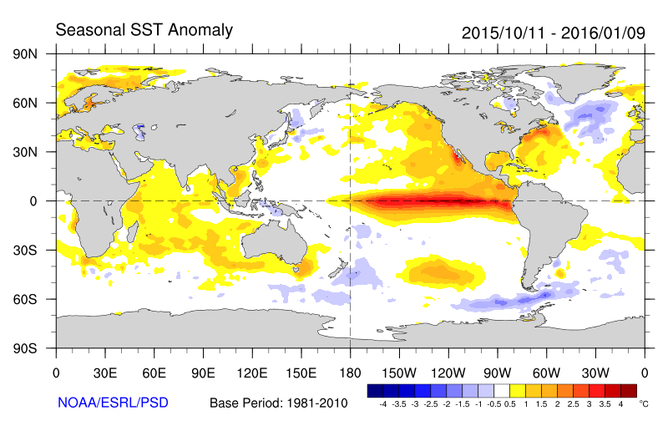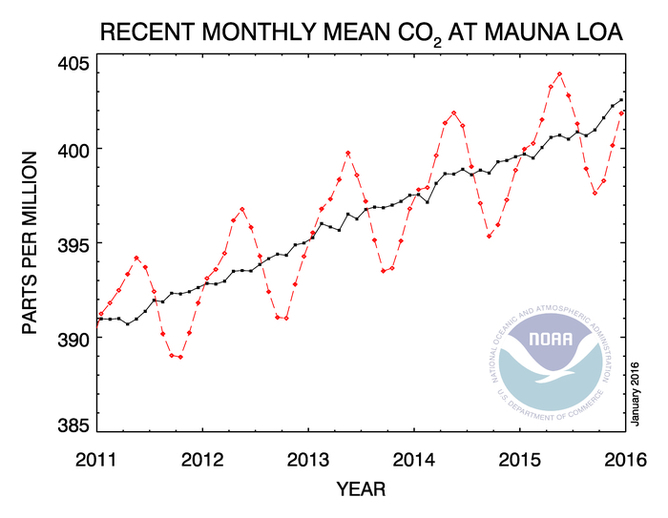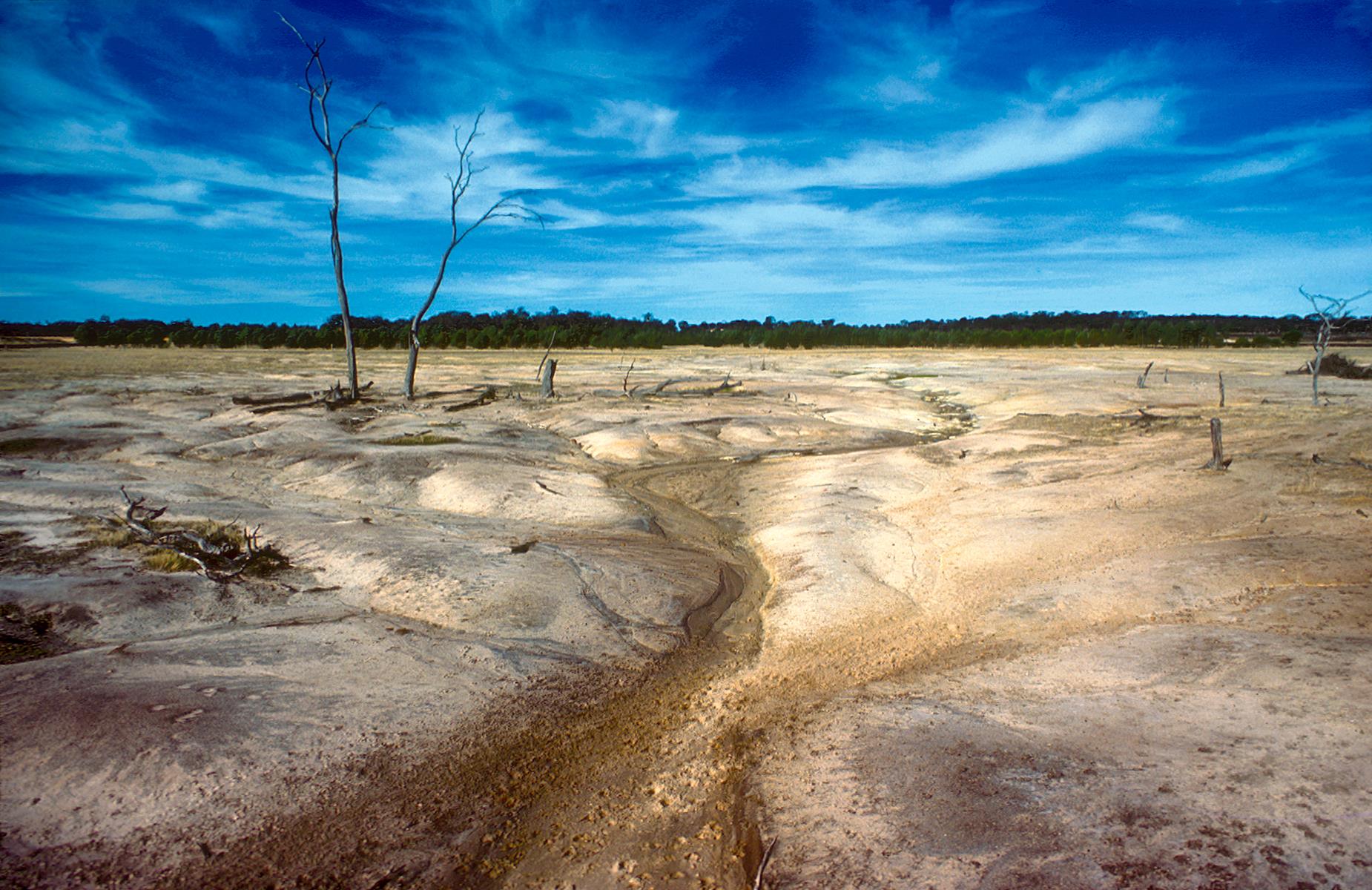It’s official: 2015 was the hottest year on record.
We are all affected by global warming. Image credit – Willem Van Aken
It’s official: 2015 was the hottest year on record. The US-based National Oceanic and Atmospheric Administration has confirmed overnight that 2015 saw the global average temperature climbing to 0.90°C above the 20th-century average of 13.9°C. The record has been confirmed by the UK Met Office.
It’s been only a year since the record was previously broken, but 2015 stands out as an extraordinarily hot year. 2014, the previous hottest year, was 0.74°C above the global average. December 2015 marks the first time in the NOAA record a global monthly temperature anomaly has exceeded 1°C – it reached 1.11°C.
Every month since February 1985 has been warmer than average, and 2015 is the 39th consecutive year with above-average annual temperatures in an uninterrupted run that began in the mid 1970s. Ten months in 2015 beat previous records for those months.
The evidence that the so-called “global warming hiatus” is over is compelling – if it ever existed.
Air temperatures over the land rose markedly to a new record of 1.33°C above average, and ocean temperatures also reached a new record anomaly of 0.74°C in 2015. The global ocean has absorbed up to 90% of the excess heat retained or accumulated by human activities since the industrial revolution, and ocean temperatures show clear warming trends both at the surface and deep down.
In 2015/2016 a strong El Niño event is bringing some of that heat buried in the ocean back to the surface.
The “perfect storm”
Global temperatures are influenced by both natural and human factors.
2015 saw the development of an El Niño event classed as one of the three strongest on record, comparable to those of 1982/83 and 1997/98.
These events are linked to higher global air temperatures. Since 1850 many of the warmest years have also been El Niño years. El Niño events are driven by changes in the winds across the Pacific Ocean, which move warm water from the western Pacific to the east.
In 2015 central Pacific sea surface temperatures were more than 3°C above average over an area of approximately 5.5 million square kilometres, around 70% of the size of the Australian continent. Air temperatures increase during El Niño events as heat is transferred from the ocean to the atmosphere.

Image showing sea surface temperature anomalies
Sea surface temperature anomalies, Oct-Dec 2015 showing the characteristic El Niño pattern of increases across the central to eastern Pacific. Image credit – NOAA
But a strong El Niño event alone is not sufficient to account for the 2015 record temperature anomaly.
In May 2015 carbon dioxide concentrations reached a monthly value of 403.9 parts per million (ppm) – the highest ever recorded. The average concentration of CO₂ in 2015 may exceed 400 pppm for the first time in human history. CO₂ is the one of the principal greenhouse gases responsible for human-induced global warming.
Since 2008 the CO₂ concentration has increased by an average of 2.1 ppm per year, largely due to fossil fuel and land-use emissions, emphasising the significant impact of human activity on the atmosphere.
CO₂ concentrations now exceed pre-industrial levels by more than 40%, and the likelihood of this increase and the associated warming being due only to natural factors is vanishingly small.

Chart showing carbon dioxide exceeded 400 ppm
Carbon dioxide exceeded 400 ppm in 8 months in 2015. Image credit – NOAA
Climate extremes everywhere
Across the globe 2015 was characterised by weather and climate extremes from floods and severe storms to droughts and heatwaves.
In Australia climate conditions are being pushed beyond our historical experience of natural climate variability and into new territory. Global warming has increased the likelihood of record-breaking temperatures by up to 100 times.
In 2015 records were broken once again across Australia, in a series of high temperature events particularly in Western Australia (January), Queensland (March), and the south-eastern states (October, November and December).
The Bureau of Meteorology 2015 Annual Climate Statement highlights October as particularly noteworthy. October 2015 was 2.89℃ warmer than the average October inn Australia. While this doesn’t make October the hottest month overall (that title still belongs to the summer months), it is the largest margin by which a monthly record has ever been broken.
High temperatures broke the internet (literally); led to cancelled sporting events in Victoria and South Australia; and added to severe bushfire conditions in several states.
In response to concerns about this ongoing warming and the associated heat extremes, the wine industry is exploring adaptation options including changing grape varieties; cereal crop, fruit, vegetable and milk producers are trying to reduce the impact of heatwaves and droughts on yields; and we need to change our behaviour and infrastructure to deal with the health impacts of more extreme temperatures and more frequent heatwaves.
We are all affected by global warming.

October 2015 warmest on record with largest temperature anomaly. Image credit – Australia Bureau of Meteorology
The necessity of mitigation
The climate and weather impacts of 2015 in Australia are examples of what is happening around the globe, adding to the overwhelming body of evidence of the reality and impacts of global warming.
The combination of a strong El Niño event with ongoing human-induced warming of the ocean and atmosphere set up the conditions for 2015. It is unlikely to be the last such record.
El Niño events are part of natural climate variability and will continue to occur, and until greenhouse gas emissions are reduced at least in line with the Paris Climate Agreement global temperatures will continue to rise for the foreseeable future.
As agreed by the governments of the world at the Paris UNFCCC meeting, the need for effective and urgent local, national and global action to reduce emissions has never been more pointed.
![]()
This article was originally published on The Conversation. Read the original article.



31st July 2018 at 3:51 pm
All this quibbling attempts to obscure or confuse the basic inescapable reality. Global warming IS real, is happening, is an existential threat and, globally and collectively, we are “fiddling while Rome burns”. Time to stop searching for flaws in the evidence, face up to it and join the attempts to turn it around while we still can.
2nd February 2016 at 1:23 pm
A Forbes Contributor seems to disagree with you on 2015 being the hottest year. It was 1998, from the satellite records. Does the CSIRO fact check their blog, or is there a rebuttal ?
“Satellite temperature readings going back to 1979 show 1998 was by far the warmest year in the satellite era, followed by 2010. 2015 comes in third. And these results are only for the period since 1979.
2015 should have been warmer. This past year saw what is likely the most powerful El Nino during the satellite temperature record. With a record El Nino, we should have experienced record high temperatures. Yet we didn’t.”
They have a chart as well.
http://www.forbes.com/sites/jamestaylor/2016/01/14/2015-was-not-even-close-to-hottest-year-on-record/#7464ab5923c6
2nd February 2016 at 2:05 pm
Hi Pete.
‘2015 being the hottest year on record’ isn’t a CSIRO assertion, but a ‘National Oceanic and Atmospheric Administration‘ and a ‘World Meteorological Association‘ one. They came to those conclusions through consensus and rigorous measurements.
ABC’s coverage http://www.abc.net.au/news/2015-11-25/2015-set-to-be-hottest-on-record-wmo-says/6974530, and the original press release https://www.wmo.int/media/content/wmo-2015-likely-be-warmest-record-2011-2015-warmest-five-year-period
Regards,
Jesse
CSIRO Communications Officer
3rd February 2016 at 2:25 pm
As you refer to NASA, you may be interested in the reply from NASA to my email enquiry about the accuracy of temperature measurements, and how that fits with this article’s headline.
Good Morning Dr. Carson,
I have been trying for decades to stress the fact that nobody can “measure” the global mean surface air temperature, a quantity that is not even very well defined as you also noticed. See http://data.giss.nasa.gov/gistemp/abs_temp.html (last link in the first FAQ). You will find that that essay echoes all your concerns and is actually more critical and outspoken than you are.
The best we can do is estimate the global mean temperature deviation from some base period, an estimate that is based on data that are far from perfect, the lack in spatial and temporal coverage being the most serious problem. Instrumentation and procedural methods are real but minor contributors to the margin of error compared to the former defects.
Because of these problems it is only relatively recently that the signal indicated by basic physics laws clearly rose above the noise, as indicated in the 1981 paper http://pubs.giss.nasa.gov/abs/ha04600x.html that some of my colleagues wrote.
Thanks,
Dr. Reto A. Ruedy
Project Manager, Trinnovim, LLC
NASA Goddard Institute for Space Studies
2880 Broadway, Rm. 201A, New York, NY 10025
ph: 212-678-5541; email:reto.a.ruedy@nasa.gov
2nd February 2016 at 11:51 am
Climate scientists need to realise that they can’t have their cake and eat it too. First they said their data was reliable and it showed a global warming hiatus. Then they said their data was unreliable and amended it and the global warming hiatus went away. Now they say their data is reliable again, but the foregoing shows that they don’t really know whether is is or not, and they’ve damaged their credibility.
22nd January 2016 at 4:45 pm
https://www.co2.earth/annual-co2
It was above 400 ppm for last year
22nd January 2016 at 12:29 am
We should’ve taken serious action in 1992 when it global warming was announced by Australian and USA Govt administrations as a serious threat.
Instead the fossil fuel industry led a viscous disinformation campaign via media moguls with vested interests in fossil fuels.
I fear it maybe too late for our kids.
22nd January 2016 at 11:31 pm
Unfortunately Jane, I have to agree with you. Me too, I think, politicians are sad sacks, but Paris will not change a thing, because greed keeps on turning the planet, until greed cannot be played anymore, because the planet will burn and dry up sooner or later. Humans will vanish. Another life form will take over.
23rd January 2016 at 4:46 pm
ExxonMobil is being investigate by the Attorney General of New York State for misleading the public. Their scientists in the 1970s and 1980s believed in the scientific consensus; management funded denier groups in the 90s. Apparently California is about to investigate as well. A bit late, but should ExxonMobil be found guilty it pulls the rug from under remaining deniers. All our energies need to be going into finding ways to mitigate against CO2 emissions, not opening new mines.
25th January 2016 at 10:47 pm
I also agree that it may be too late now. The governments are just playing, pretending that by their usual rethoric they can make any difference in a problem that they don’t understand; it should be scientists guiding the effort, and we should have begun doing the sacrifices as a society long ago.